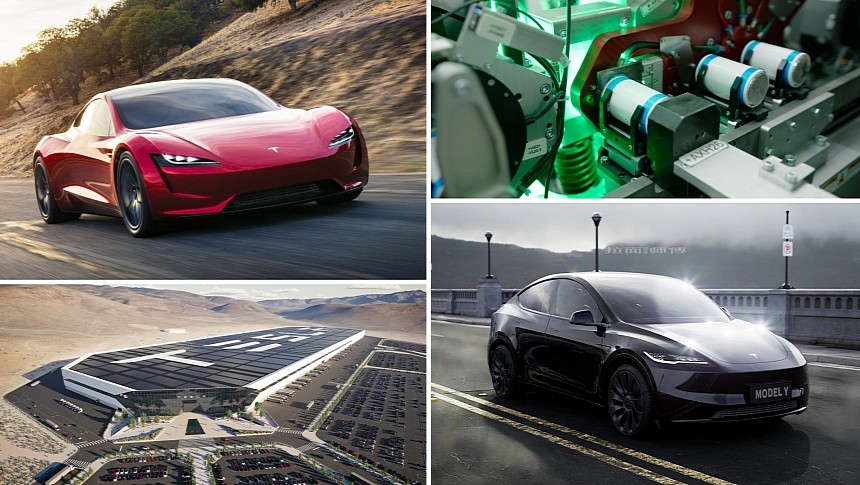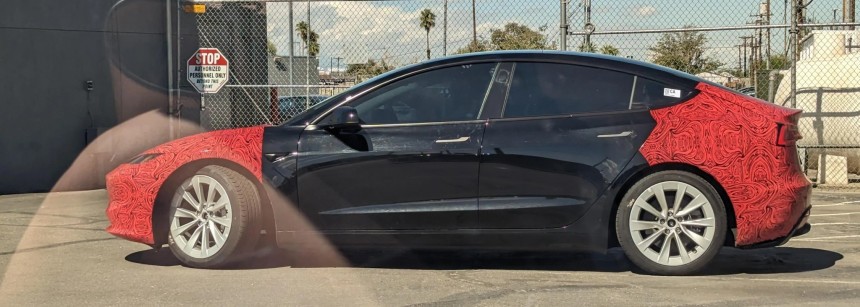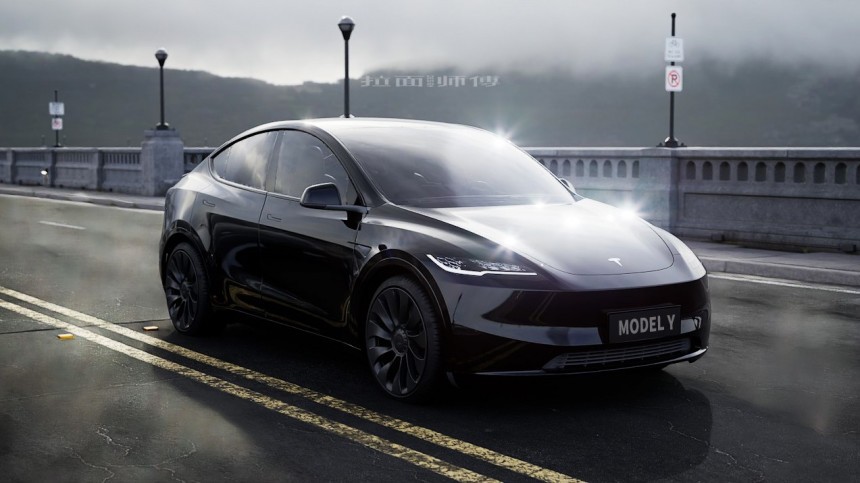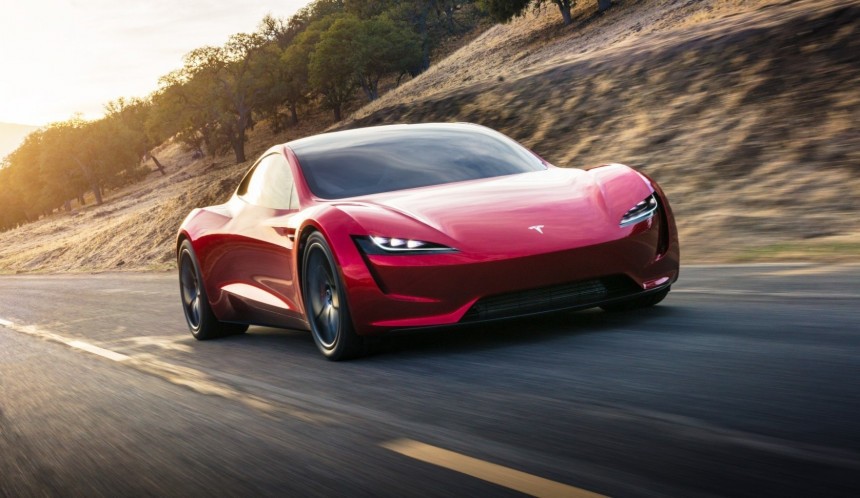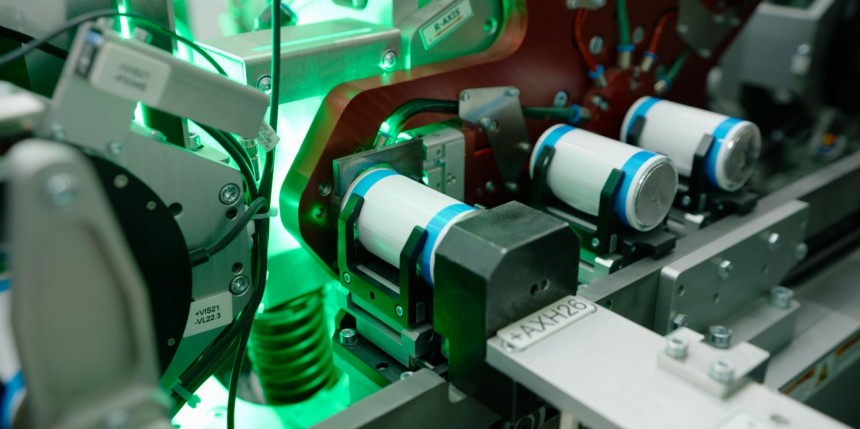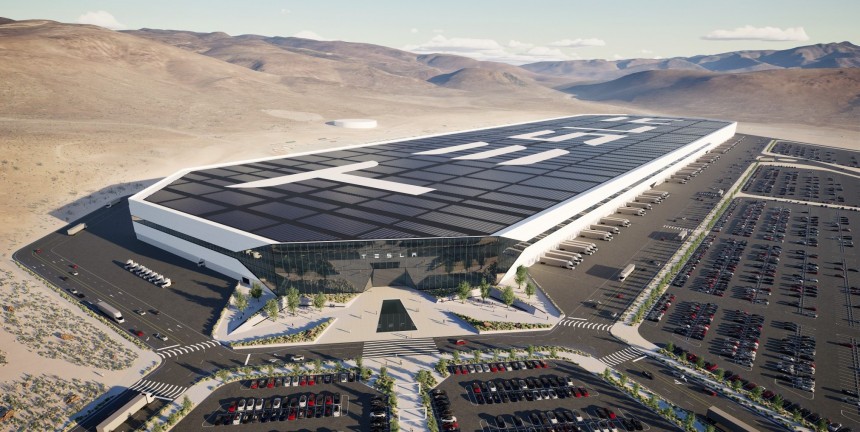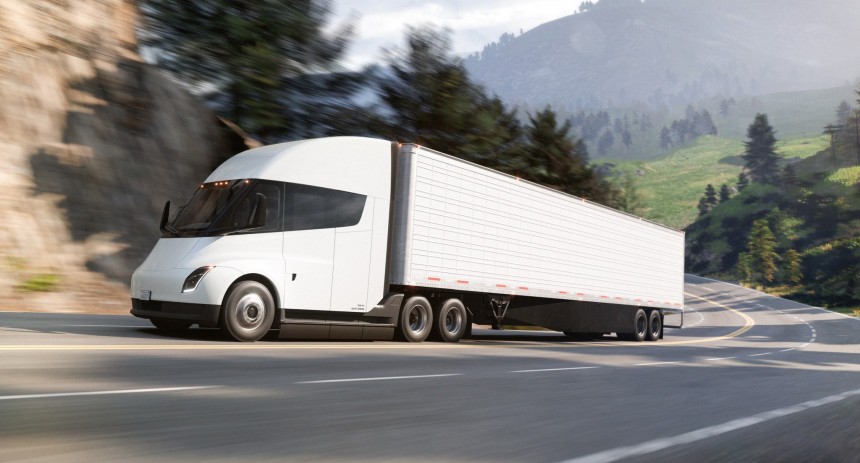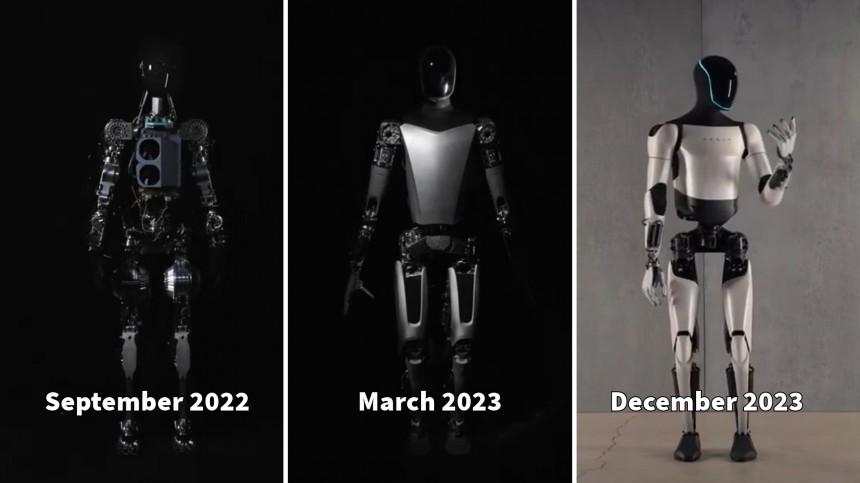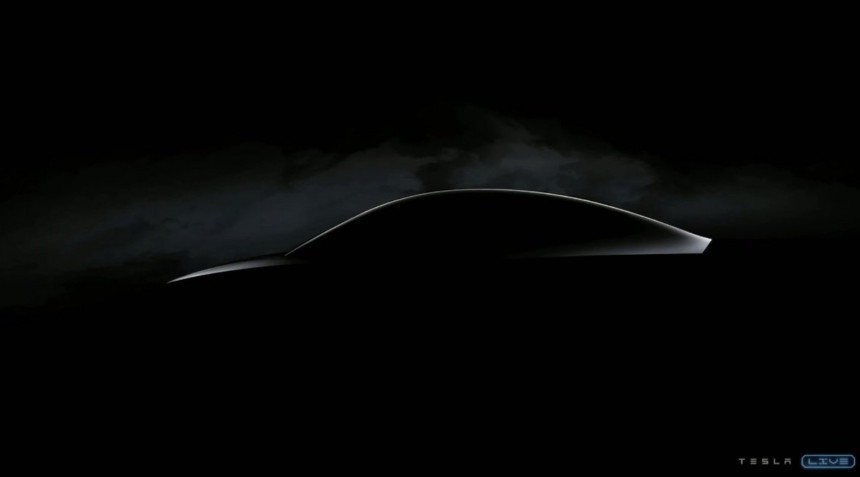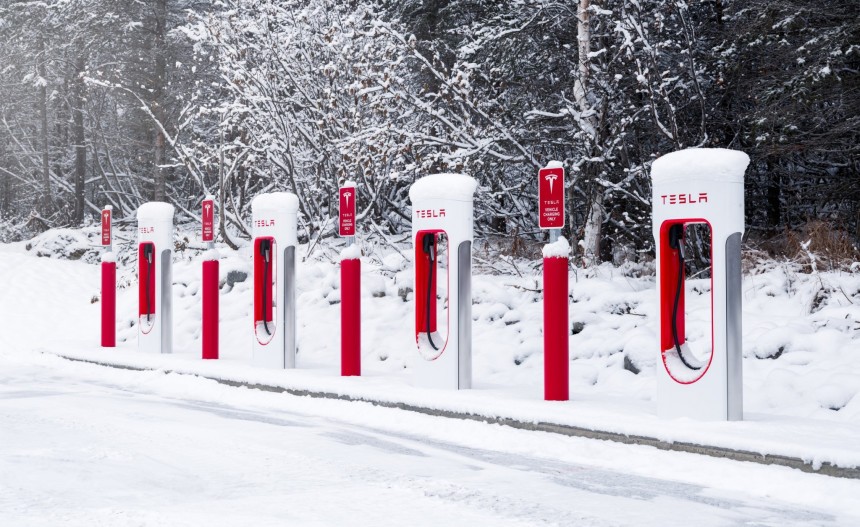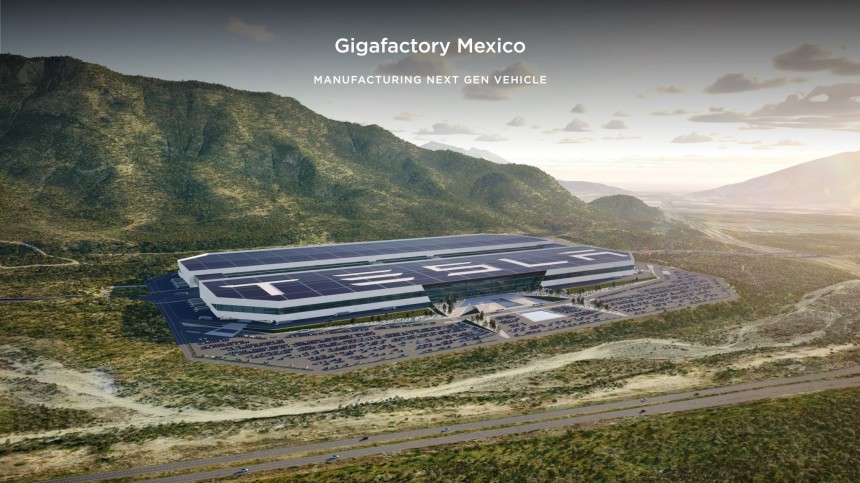Tesla reached a market capitalization of over one trillion dollars in 2021 for a short while but has since fallen to 2020 levels. Here are the challenges in 2024 and what Tesla needs to get right in order to become a trillion-dollar company again.
Many people believe Wall Street only cares about volumes and margins. This is why Tesla appears to underperform in the current economy. Much has been talked about how the massive price cuts in January 2023 have compromised the company's capitalization because the analysts look at the shrinking margins and lower demand expectations. However, it's a different story when you look at Tesla's stock evolution over the years.
Tesla stock was already performing at its worst in December 2022, right before the price cuts. On January 6, Tesla shares traded for $113, the lowest since 2020. However, the downtrend reversed after Tesla discounted all its EV models on January 11, 2023. This is interesting, showing that many Tesla investors understood that cutting prices is not the doom and gloom situation others predicted.
Indeed, as Tesla's EVs have become more affordable, it has put a lot of pressure on competing carmakers to lower prices. Although this wreaked havoc among legacy carmakers, it was a boon for car buyers, who finally saw many EV models selling for ICE-like prices. Contrary to expectations, this also gave Tesla sales a nice boost, especially in the fourth quarter of 2023.
Many people still look at Tesla as a car company and keep counting its car deliveries to see how it's doing. Still, other business lines have started to contribute significantly to its bottom line. Elon Musk sees Tesla as an AI/robotics company nowadays, although these sectors are yet to contribute much to Tesla's revenue. They're probably the sexiest, but Tesla is performing much better in areas like energy and services.
Tesla did a fantastic job in 2023, finally delivering on many of its promises. These include the Cybertruck starting deliveries, the refreshed Model 3 launch in Europe and Asia, and the launch of the second-generation Optimus robot, among others. It's still behind in other areas, but this is nothing new for the EV company, which always had "more than enough on its plate," to quote Elon Musk. Here are ten of the most important products and milestones Tesla needs to get right in 2024 to prove it hasn't lost its mojo.
The trial production of the refreshed M3P has already started at the Tesla Fremont factory, and trustworthy sources indicate that deliveries of the sporty sedan will begin in the second quarter or even earlier. There are many upgrades in store for the new model, including a front bumper camera. The same sources claim that the parts have already been contracted with suppliers, and the bumper camera will also make it to the RWD and LR AWD models.
As for the Model 3 Performance, it is expected to debut a more powerful rear motor featuring a carbon-sleeve rotor, among other upgrades. We've already seen the new Plaid-badged bucket seats. The Model 3 Performance should also boast upgraded brakes, an adaptive suspension (a first in the Model 3 lineup), and a personalized software UI. Performance-wise, expect it to be closer to the Model S Plaid than ever before but without threatening the bigger brother's track records.
Besides the obvious cosmetic changes, the Model Y will also get a refreshed cabin with a rear entertainment screen, a larger center screen, and more upscale materials. Sadly, this also means that the stalks will go away, making the entire Tesla lineup stalkless. To sweeten the pill, Tesla will feature a vastly improved sound system in the refreshed Model Y, similar to the one in the Model 3 Highland and the Cybertruck.
Unlike the Model 3, which launched without megacasting and structural battery, the Model Y will continue to offer them. Tesla further optimized the die-cast structures to make them lighter and stiffer. As we've seen on the Cybertruck, the structural improvements allow the use of less metal without compromising the crash protection. So far, no prototype of the Model Y Juniper has been spotted in the US, although a Chinese post on social media claimed to show one.
Last year, Musk was confident that Tesla would complete the Roadster design and engineering by the end of 2023 and begin production in 2024. The latest update was offered in May during a Spaces session with Ford CEO Jim Farley, with "end of 2024" as the likely timeline. Knowing Musk, this sounds more like "sometime in 2025," especially as the Roadster is not projected to sell in significant numbers.
The Roadster was projected to be the fastest Tesla ever produced when it was introduced in 2017. However, Tesla didn't have the Model S Plaid back then. In typical Tesla fashion, the Roadster has incredible features, including rocket thrusters to improve acceleration and maneuverability. Tesla promised that the Roadster 2.0 would have a 0-60 time of 1.1 seconds with thrusters and 2.1 seconds without them. However, the latter was later lowered to 1.9 seconds.
The 4680 cells have low production yields and inferior performance compared to the 2170 cells, leading to poor charging performance. According to a recent report from China, Tesla was forced to import cathode coils to speed up production until Panasonic joined the fray with its own 4680 cells. This might lead to lower-quality battery cells, as cathode coils are very sensitive and require a sterile environment from parts to finite cells.
Tesla is trying to optimize the dry battery electrode manufacturing method to lower production costs and times. A silicon anode is also on the roadmap, together with chemistry improvements, but we have no hard facts to support these rumors. What is clear is that Tesla needs to significantly increase 4680-cell production and performance if it wants the Cybertruck to succeed and reach the planned production pace.
The project was announced in January 2023 but hasn't made visible progress since then. However, new information indicates that Tesla finally started work to expand Giga Nevada. The most crucial part is a new battery production line for 4680 cells, operated as before in partnership with Panasonic. This should add 105 GWh of battery cell to Giga Nevada's annual capacity once it's completed.
The expansion work indicates that Tesla is now more confident about the performance of its 4680 cells. When complete, the Giga Nevada expansion will allow Tesla to also use the larger cells for other models in its lineup. The goal is to produce Tesla Semi using these cells, which is why the Giga Nevada expansion also includes a dedicated production line for the electric Class-8 truck.
The Semi encountered a similar bottleneck as the Cybertruck, with 4680-cell production yields too low to allow Tesla to use them for the electric Class-8 truck. This is why the first Semi units were built with 2170 cells. You see now how crucial the 4680-cell production line at Giga Nevada is for Tesla. This appears to ease, allowing Tesla to finally launch volume production of the Semi in Nevada.
This could not happen before the Giga Nevada expansion is complete, so you see how everything is connected like pieces of a puzzle. Without having all of them ready, you cannot complete the puzzle. Things are falling into place now, with Tesla confident it could start Semi's volume production by the end of this year. It plans to build 50,000 units per year at full capacity and become America's biggest Class-8 truck manufacturer.
Tesla has already pushed the FSD Beta V12 to employees for testing, but it's unclear when this version will become commercial software. Elon Musk is convinced, not unlike in the years before, that 2024 will be the year FSD will get out of beta. The end-to-end AI self-driving software holds crucial promises to become a better driver the more it drives, just like humans do.
The same is true for the Optimus bot, which is already in its second generation of hardware. People think Tesla might already deploy humanoid robots in its gigafactories by the end of 2024. After all, it's under a lot of pressure from competing projects, including the one developed by Figure for BMW. However, Tesla can't advance the Optimus program unless it cracks Full Self-Driving first.
Tesla initially intended to start production of its next-gen EVs at its newest gigafactory in Mexico, but the plans have changed. Now, both the next-generation platform and the unboxed vehicle manufacturing process are being developed at Giga Texas. The new architecture will underpin both an upcoming compact EV and Tesla's robotaxi once FSD gets the basics right. When the manufacturing process is refined, and Giga Mexico is up and running, the affordable EVs will start production.
Optimists claim this might happen by the end of the year, although things might not be ready by then. This being an entirely new manufacturing process, it needs time to mature before production gets up to speed. By simplifying all the aspects of vehicle manufacturing, Tesla is confident it can sell the new model below $25,000. If this is indeed the case, it sits on a golden mine. Consider that competing carmakers already suffer with Tesla prices starting around $40,000.
Still, with the wide adoption of the NACS charging standard, most EVs in North America will gain access to the best charging network. This differentiator will disappear, so Tesla must step up its game to ensure people still have a reason to choose its EVs. This will also bring a significant benefit, turning the Supercharger business into an important profit center for Tesla.
The Supercharger network expands at a fast pace, but it's clearly not enough even at current utilization rates. In the winter, people spend more time charging, and this leads to congestion and, sometimes, to unwanted media headlines. We all know the Chicago horror story and how everyone blames it on operating EVs in the winter. However, there's nothing wrong with electric cars; it's with ride-sharing companies and inexperienced EV drivers clogging the Superchargers. That's why Tesla needs to build more of them.
Even though Tesla's production seems to be enough for the current demand, that's only because EVs are still expensive for most people. Once the more affordable next-generation EVs start production, Tesla will need all the manufacturing capacity it can get. This will not work with current gigafactories in rich countries like Germany and the US. Tesla will need to produce EVs in low-wage countries to keep production costs at a minimum.
In 2024, Tesla will further expand its Shanghai gigafactory, which has already reached its peak capacity of one million EVs. It will also start operations at its gigafactory in Mexico, which is designed to produce two million cars per year. The next step is announcing the location of a new gigafactory in India, which is also rumored to happen in 2024. Unless these new production facilities start pumping affordable EVs like there's no tomorrow, Tesla will not be able to stick to its plans of roughly 50% growth year over year.
Tesla stock was already performing at its worst in December 2022, right before the price cuts. On January 6, Tesla shares traded for $113, the lowest since 2020. However, the downtrend reversed after Tesla discounted all its EV models on January 11, 2023. This is interesting, showing that many Tesla investors understood that cutting prices is not the doom and gloom situation others predicted.
Indeed, as Tesla's EVs have become more affordable, it has put a lot of pressure on competing carmakers to lower prices. Although this wreaked havoc among legacy carmakers, it was a boon for car buyers, who finally saw many EV models selling for ICE-like prices. Contrary to expectations, this also gave Tesla sales a nice boost, especially in the fourth quarter of 2023.
Many people still look at Tesla as a car company and keep counting its car deliveries to see how it's doing. Still, other business lines have started to contribute significantly to its bottom line. Elon Musk sees Tesla as an AI/robotics company nowadays, although these sectors are yet to contribute much to Tesla's revenue. They're probably the sexiest, but Tesla is performing much better in areas like energy and services.
Tesla did a fantastic job in 2023, finally delivering on many of its promises. These include the Cybertruck starting deliveries, the refreshed Model 3 launch in Europe and Asia, and the launch of the second-generation Optimus robot, among others. It's still behind in other areas, but this is nothing new for the EV company, which always had "more than enough on its plate," to quote Elon Musk. Here are ten of the most important products and milestones Tesla needs to get right in 2024 to prove it hasn't lost its mojo.
1. The launch of the Tesla Model 3 Performance
Tesla launched the refreshed Model 3 in North America earlier this month, keeping the same lineup as in other regions. This means no Performance model, despite the rumors that the US launch would include the sportiest variant. However, the refreshed Model 3 Performance launch is just around the corner, as revealed by several reports.As for the Model 3 Performance, it is expected to debut a more powerful rear motor featuring a carbon-sleeve rotor, among other upgrades. We've already seen the new Plaid-badged bucket seats. The Model 3 Performance should also boast upgraded brakes, an adaptive suspension (a first in the Model 3 lineup), and a personalized software UI. Performance-wise, expect it to be closer to the Model S Plaid than ever before but without threatening the bigger brother's track records.
2. Tesla Model Y Juniper in the pipeline
The refreshed Model Y should be second in line after the Model 3 Performance, and people are already talking about it. Known internally as Project Juniper, the refreshed Model Y should bring the electric crossover in line with the Model 3 Highland in terms of design and technologies. Based on earlier reports, the redesign has been finished, and production is expected to start in the summer.Unlike the Model 3, which launched without megacasting and structural battery, the Model Y will continue to offer them. Tesla further optimized the die-cast structures to make them lighter and stiffer. As we've seen on the Cybertruck, the structural improvements allow the use of less metal without compromising the crash protection. So far, no prototype of the Model Y Juniper has been spotted in the US, although a Chinese post on social media claimed to show one.
3. The long shot: Tesla Roadster
After the Cybertruck started deliveries, the Roadster was the last unfulfilled promise Tesla made a long time ago. The Roadster 2.0 launch is eagerly awaited by many reservation holders, especially since they placed a $50,000 deposit. Although Musk promised in 2021 that the Roadster would start production in 2023, Tesla later said the sportscar is not a priority for the company.The Roadster was projected to be the fastest Tesla ever produced when it was introduced in 2017. However, Tesla didn't have the Model S Plaid back then. In typical Tesla fashion, the Roadster has incredible features, including rocket thrusters to improve acceleration and maneuverability. Tesla promised that the Roadster 2.0 would have a 0-60 time of 1.1 seconds with thrusters and 2.1 seconds without them. However, the latter was later lowered to 1.9 seconds.
4. The 4680 cells done right
Although Tesla checked most of its objectives in 2023, the 4680 battery cells remained a disappointment. The larger cells were first introduced in 2020 during Tesla's Battery Day event, promising higher energy density and lower production costs. So far, the 4680 haven't lived up to expectations and were the main reason Cybertruck's range was so underwhelming.Tesla is trying to optimize the dry battery electrode manufacturing method to lower production costs and times. A silicon anode is also on the roadmap, together with chemistry improvements, but we have no hard facts to support these rumors. What is clear is that Tesla needs to significantly increase 4680-cell production and performance if it wants the Cybertruck to succeed and reach the planned production pace.
5. Giga Nevada expansion
For a long time, Giga Nevada has been one of Tesla's most important production facilities. Not because electric vehicles were produced there but because the bulk of Li-ion battery cells Tesla uses in its US EV production comes from Nevada. This gigafactory is projected to become even more critical for Tesla, thanks to new expansion plans to include 4680-cell and Tesla Semi production lines.The expansion work indicates that Tesla is now more confident about the performance of its 4680 cells. When complete, the Giga Nevada expansion will allow Tesla to also use the larger cells for other models in its lineup. The goal is to produce Tesla Semi using these cells, which is why the Giga Nevada expansion also includes a dedicated production line for the electric Class-8 truck.
6. Tesla Semi should start volume production
Tesla delivered the first Semi units to PepsiCo in December 2022, but that was only as part of a small pilot program. Tesla continued to manually assemble the Semi trucks in Nevada in order to expand the road tests. In late December 2023, Tesla's VP of Engineering Lars Moravi revealed that Tesla had tripled its Tesla Semi fleet, with almost 100 trucks undergoing testing.This could not happen before the Giga Nevada expansion is complete, so you see how everything is connected like pieces of a puzzle. Without having all of them ready, you cannot complete the puzzle. Things are falling into place now, with Tesla confident it could start Semi's volume production by the end of this year. It plans to build 50,000 units per year at full capacity and become America's biggest Class-8 truck manufacturer.
7. Cracking Full Self-Driving and the Optimus Bot
Like the 4680 cells, the Full Self-Driving software is a foundation stone for many other Tesla projects. Solving vehicle autonomy opens the door to using the EVs as robotaxis. It also allows Tesla to start robotaxi production based on the next-generation architecture. Tesla's FSD is also paramount for the Optimus bot program, allowing the humanoid robots to "see" the world and learn from interactions with it. Since both rely on neural networks to function, I decided to place them in the same category.The same is true for the Optimus bot, which is already in its second generation of hardware. People think Tesla might already deploy humanoid robots in its gigafactories by the end of 2024. After all, it's under a lot of pressure from competing projects, including the one developed by Figure for BMW. However, Tesla can't advance the Optimus program unless it cracks Full Self-Driving first.
8. Next-generation EVs and Gen-3 Architecture
Tesla might be the manufacturer of the best-selling vehicle in the world in 2023 (the Model Y), but it needs a much more affordable model if it wants to scale to the volumes promised in the Master Plan Part 3. This is the role of the next-generation EVs built on the Gen-3 architecture. It's planned as a disruptive platform with a radically changed manufacturing process optimized for very high-volume production.Optimists claim this might happen by the end of the year, although things might not be ready by then. This being an entirely new manufacturing process, it needs time to mature before production gets up to speed. By simplifying all the aspects of vehicle manufacturing, Tesla is confident it can sell the new model below $25,000. If this is indeed the case, it sits on a golden mine. Consider that competing carmakers already suffer with Tesla prices starting around $40,000.
9. Supercharger network expansion
Tesla Supercharger network is the best charging network in the world and the best reason people prefer a Tesla EV over anything else. It's actually so good that people refuse to buy other brands, even when they are more affordable. Having to deal with out-of-order chargers or sub-par charging experiences is a significant deterrent in choosing anything but a Tesla.The Supercharger network expands at a fast pace, but it's clearly not enough even at current utilization rates. In the winter, people spend more time charging, and this leads to congestion and, sometimes, to unwanted media headlines. We all know the Chicago horror story and how everyone blames it on operating EVs in the winter. However, there's nothing wrong with electric cars; it's with ride-sharing companies and inexperienced EV drivers clogging the Superchargers. That's why Tesla needs to build more of them.
10. China bet and the new gigafactories
Tesla appears to be doubling down on China, which is understandable considering this is the most important car market in the world. It's also where electric vehicles have the largest acceptance and penetration. Still, as geopolitical conditions change, diverting away from China might be a wise approach. Tesla is trying both ways, with more production planned in China and new factories around the world.In 2024, Tesla will further expand its Shanghai gigafactory, which has already reached its peak capacity of one million EVs. It will also start operations at its gigafactory in Mexico, which is designed to produce two million cars per year. The next step is announcing the location of a new gigafactory in India, which is also rumored to happen in 2024. Unless these new production facilities start pumping affordable EVs like there's no tomorrow, Tesla will not be able to stick to its plans of roughly 50% growth year over year.
